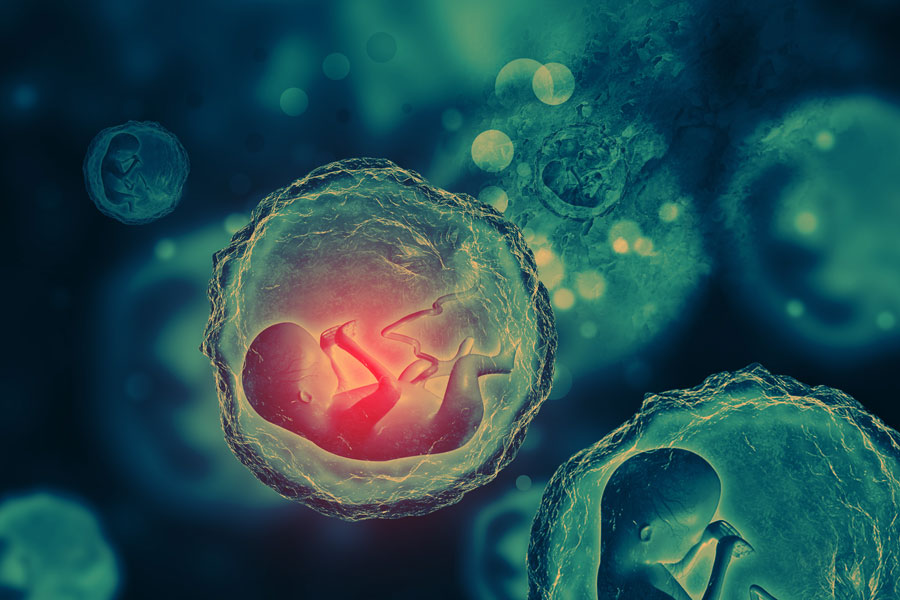
NEW YORK, NY – Researchers have reported a proof-of-concept method to generate early human embryos in the lab by first turning human skin cells into egg-like cells and then fertilizing them with donor sperm. The work, led by Oregon Health & Science University (OHSU) and published Sept. 30, 2025, in Nature Communications, advances an emerging approach that could one day expand options for patients struggling with infertility—but it remains far from clinical use.
The technique starts by removing the nucleus from a donor egg and replacing it with the nucleus from a patient’s skin cell. Chemical cues then drive the hybrid cell to shed half its chromosomes, mimicking the natural reduction that happens in eggs. When fertilized with sperm, a minority progressed to the blastocyst stage (a hollow ball of cells that forms within a week of fertilization). However, researchers found frequent chromosomal abnormalities and limited development, and no attempt was made to establish a pregnancy.
The findings matter because they test a key step toward producing eggs for people who cannot use their own—such as those whose fertility was affected by illness, age, or treatment. But experts caution that efficiency and genetic accuracy must improve substantially before any human application is considered. Coverage by several outlets emphasized this is early-stage science with a long road ahead.
Separately, scientists are also building embryo-like models from stem cells-called “blastoids”-that recapitulate some early developmental events (even producing beating heart cells or blood-forming cells in recent reports) while being designed not to develop into fetuses. These models help study early development and disease without using natural embryos and are subject to strict lab safeguards.
While the breakthrough occurred in Oregon, the implications reach far beyond the lab. For individuals on Long Island who seek fertility treatments in New York City or regional medical centers, this type of research may eventually influence how clinics understand early embryo development and reproductive health. Although the work remains in its earliest stages, scientists hope it could someday lead to new ways of preserving parenthood options for people who cannot produce viable eggs. For now, traditional in vitro fertilization remains the only proven and regulated method for conception assistance.
In the United States, research involving human embryos is guided by a patchwork of ethical standards rather than a single federal law. Oversight typically falls under institutional review boards, funding restrictions, and scientific guidelines established by organizations such as the International Society for Stem Cell Research. In New York, most research institutions adhere to strict culture limits-usually capping embryo growth around 14 days or the formation of the primitive streak-and require internal ethics approval for any experiments that approach this stage. Any future move toward clinical use of lab-grown eggs would face extensive regulatory review at both the state and federal levels.
Key Facts & Details
| Item | What We Know |
|---|---|
| Who | OHSU team working on lab-made eggs from human skin cells. |
| What | Created egg-like cells via nuclear transfer; fertilized them; a subset reached blastocyst stage. Many had chromosomal errors. No pregnancy attempts. |
| When | Paper published Sept. 30, 2025; coverage followed in early October. |
| How | Remove nucleus from donor egg → insert skin-cell nucleus → induce a meiosis-like reduction of chromosomes (“mitomeiosis”) → fertilize with sperm. |
| Safety/Status | Proof-of-concept only; inefficient and error-prone; clinical use is years away. |
| Related Research | Stem-cell embryo models (blastoids) mimic early development (e.g., heart/blood precursors) but are engineered not to become fetuses. |
Looking ahead, researchers will be watching whether other laboratories can replicate the Oregon team’s results and achieve higher rates of normal chromosome formation. Continued discussion about ethical boundaries-such as limits on how long embryos can be cultured-and clearer regulatory frameworks will also be essential before any clinical applications can be considered. Meanwhile, advances in embryo-like model systems known as blastoids may help scientists study the earliest stages of human development and improve fertility screening methods without relying on natural embryos.


